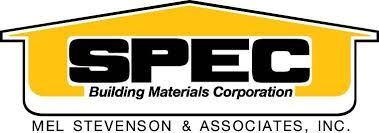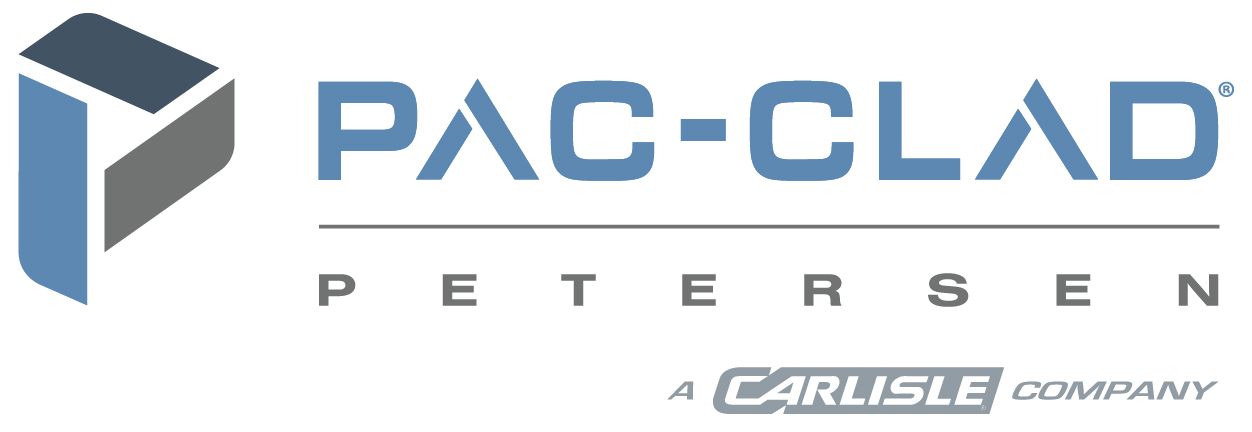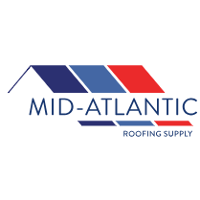Step-by-Step Guide to What Happens During a Roof Replacement
August 18, 2025
Replacing your roof is a significant home improvement project that can feel overwhelming if you’re unfamiliar with the process. This guide breaks down each step of a roof replacement, so you’ll know exactly what to expect from start to finish.
1. Initial Consultation and Inspection
Before the project begins, a roofing contractor will:
- Inspect your roof: Evaluate its condition, identify issues, and determine the scope of work.
- Provide a quote: You’ll receive a detailed estimate, including material costs, labor, and a timeline.
- Choose materials: Discuss roofing options, such as shingles, metal, or tiles, and select a style and color.
2. Scheduling and Preparation
Once you approve the quote, the contractor will:
- Schedule the project: Set a start date that works for you and consider weather conditions.
- Secure permits: Obtain any necessary permits required by local regulations.
- Order materials: Ensure all materials are on-site or ready for delivery before the project begins.
3. Property Protection
To protect your property during the replacement process, the crew will:
- Cover landscaping: Use tarps and plywood to shield plants, shrubs, and outdoor furniture.
- Set up safety equipment: Install scaffolding or harness systems to ensure worker safety.
- Prepare for debris: Place dumpsters or trailers to collect old roofing materials.
4. Removal of the Old Roof
The first major step in replacing your roof involves:
- Stripping the old materials: Tear off shingles, tiles, or metal panels, exposing the roof deck.
- Inspecting the decking: Check the wood beneath for rot or damage and replace it if necessary.
- Cleaning the surface: Remove any debris to create a smooth surface for the new materials.
5. Installing the New Roof
This is the core of the project, where your new roof takes shape:
- Installing underlayment: A waterproof layer is applied to the roof deck to protect against leaks.
- Adding flashing: Metal flashing is installed around chimneys, vents, and other protrusions to prevent water infiltration.
- Laying new roofing materials: Shingles, tiles, or panels are carefully placed and secured.
- Ventilation upgrades: Ridge vents or other systems are added to improve attic airflow.
6. Cleanup and Final Inspection
Once the new roof is in place, the crew will:
- Clean up the site: Remove debris, sweep for nails, and ensure your property is left spotless.
- Conduct a final inspection: The contractor will examine the roof to ensure it meets quality standards.
- Walk-through with the homeowner: Review the work completed and address any questions or concerns.
7. Warranty and Maintenance Tips
After the project is complete:
- Receive warranty information: Understand the coverage for both materials and labor.
- Get maintenance advice: Learn how to care for your new roof to maximize its lifespan.
- Schedule future inspections: Plan regular checkups to ensure your roof stays in excellent condition.
Key Tips for Homeowners
- Plan for noise and disruption: Roof replacements can be noisy, so consider staying elsewhere if needed.
- Communicate with your contractor: Keep an open line of communication to address any concerns.
- Verify the details: Make sure your contract covers everything discussed, including cleanup and warranties.
- Conclusion:
A roof replacement is a major investment that enhances your home’s safety, value, and curb appeal. By understanding the process, you can feel confident and prepared as your project unfolds.
Find reliable metal roofing in Atlantic Beach. Local insights and tips to help Atlantic Beach homeowners make informed decisions about metal roofing systems.
Expert roofing contractor guidance for Jacksonville residents. Learn how to choose the right roofer and what to expect from quality service with local hurricane season expertise.
Extreme weather events like heavy rain, high winds, hail, snowstorms, and hurricanes can take a toll on your roof. Taking proactive measures to safeguard your roof ensures your home stays protected and minimizes potential damage. Here’s a comprehensive guide to protecting your roof during extreme weather conditions. 1. Inspect Your Roof Regularly Routine inspections are your first line of defense against extreme weather. What to look for: Loose or missing shingles Cracked tiles Damaged flashing Debris buildup in gutters or on the roof When to inspect: Before and after major weather events. 2. Secure Loose Shingles and Flashing High winds can rip off loose shingles or flashing, leaving your roof vulnerable. How to secure them: Nail down or replace loose shingles. Seal flashing around chimneys, vents, and skylights with roofing cement. 3. Clean Your Gutters and Downspouts Clogged gutters can lead to water buildup and leaks during heavy rain. What to do: Clear leaves, dirt, and debris from gutters. Ensure downspouts direct water away from the foundation. 4. Trim Overhanging Trees Branches can fall on your roof during storms, causing damage. Tips for tree maintenance: Trim branches that hang over your roof. Remove weak or dead trees near your home. 5. Hidden Leaks and Water Damage Snow and ice can conceal roof damage, making it harder to detect leaks or structural issues until they worsen. Signs of Snow and Ice Damage Sagging rooflines or ceilings. Icicles forming on the edge of the roof (a sign of poor drainage). Water stains on walls or ceilings. Cracked, loose, or missing shingles. Leaks or drafts inside the home. How to Protect Your Roof from Snow and Ice 1. Clear Snow Safely Use a roof rake: A long-handled roof rake can help you remove snow from the edges without climbing onto the roof. Hire professionals: If snow is excessive, contact experts to clear it safely. 2. Prevent Ice Dams Improve attic insulation: Prevent heat from escaping and melting the snow unevenly. Ensure proper ventilation: Good airflow helps maintain consistent roof temperatures. Install heat cables: Electric cables can prevent ice dams by melting snow at critical points. 3. Maintain Gutters Clean gutters before winter to ensure proper drainage. Install gutter guards to prevent debris buildup. 4. Schedule Regular Inspections Have a professional inspect your roof before and after winter for signs of damage or wear. Look for issues like weak flashing, missing shingles, or structural vulnerabilities. 5. Trim Overhanging Branches Reduce the risk of branches breaking under snow weight and damaging your roof. Factors to Consider Before Financing 1. Your Financial Situation Do you have enough savings to cover the cost without financing? Will monthly payments fit comfortably within your budget? 2. Loan Terms What is the interest rate, and how will it affect the total cost? Are there penalties for early repayment? 3. Roof Lifespan and Value How long do you plan to stay in your home? Will the new roof add significant value or energy savings? 4. Available Financing Options Does your roofing contractor offer in-house financing? Are there better loan options available through banks or credit unions? 5. Emergency Repairs If the repair is urgent, financing may be the only way to avoid further damage and costs. What to Do If You Notice Damage Address issues immediately: Ignoring problems can lead to more extensive and costly repairs. Call a professional: Roofing experts can safely assess the damage and recommend solutions. Document damage for insurance: Take photos and contact your provider to file a claim if needed. Conclusion Snow and ice are unavoidable in winter, but proactive maintenance and timely action can minimize their impact on your roof. By staying vigilant and addressing issues early, you can protect your home and avoid costly repairs.
1. Excess Weight on the Roof Snow accumulates quickly during heavy storms, and its weight can stress your roof's structure. Light, fluffy snow: Weighs less but can still add up during prolonged snowfall. Wet, heavy snow: Puts significant strain on your roof, potentially leading to sagging or collapse. 2. Ice Dams Ice dams form when heat from your home causes snow on the roof to melt, then refreezes at the eaves. Problems caused by ice dams: Prevent proper drainage, causing water to back up under shingles. Lead to leaks, water damage, and mold growth. 3. Freeze-Thaw Cycle Repeated cycles of freezing and melting can damage your roof materials. Cracked shingles or tiles: Caused by expanding ice within cracks or gaps. Weakened flashing: Water that seeps under flashing can freeze and expand, causing damage. 4. Gutter Damage Heavy snow and ice can build up in gutters, causing them to pull away from the roof or even collapse. Clogged gutters: Prevent snowmelt from draining properly, exacerbating ice dam formation. 5. Hidden Leaks and Water Damage Snow and ice can conceal roof damage, making it harder to detect leaks or structural issues until they worsen. Signs of Snow and Ice Damage Sagging rooflines or ceilings. Icicles forming on the edge of the roof (a sign of poor drainage). Water stains on walls or ceilings. Cracked, loose, or missing shingles. Leaks or drafts inside the home. How to Protect Your Roof from Snow and Ice 1. Clear Snow Safely Use a roof rake: A long-handled roof rake can help you remove snow from the edges without climbing onto the roof. Hire professionals: If snow is excessive, contact experts to clear it safely. 2. Prevent Ice Dams Improve attic insulation: Prevent heat from escaping and melting the snow unevenly. Ensure proper ventilation: Good airflow helps maintain consistent roof temperatures. Install heat cables: Electric cables can prevent ice dams by melting snow at critical points. 3. Maintain Gutters Clean gutters before winter to ensure proper drainage. Install gutter guards to prevent debris buildup. 4. Schedule Regular Inspections Have a professional inspect your roof before and after winter for signs of damage or wear. Look for issues like weak flashing, missing shingles, or structural vulnerabilities. 5. Trim Overhanging Branches Reduce the risk of branches breaking under snow weight and damaging your roof. Factors to Consider Before Financing 1. Your Financial Situation Do you have enough savings to cover the cost without financing? Will monthly payments fit comfortably within your budget? 2. Loan Terms What is the interest rate, and how will it affect the total cost? Are there penalties for early repayment? 3. Roof Lifespan and Value How long do you plan to stay in your home? Will the new roof add significant value or energy savings? 4. Available Financing Options Does your roofing contractor offer in-house financing? Are there better loan options available through banks or credit unions? 5. Emergency Repairs If the repair is urgent, financing may be the only way to avoid further damage and costs. What to Do If You Notice Damage Address issues immediately: Ignoring problems can lead to more extensive and costly repairs. Call a professional: Roofing experts can safely assess the damage and recommend solutions. Document damage for insurance: Take photos and contact your provider to file a claim if needed. Conclusion Snow and ice are unavoidable in winter, but proactive maintenance and timely action can minimize their impact on your roof. By staying vigilant and addressing issues early, you can protect your home and avoid costly repairs.
Replacing or repairing a roof can be a significant investment, but not everyone has the budget to pay for it upfront. Roof financing offers an alternative way to manage the cost of a new roof without draining your savings. But is it the right option for you? This guide explores the pros, cons, and factors to consider when deciding whether to finance your roof. What Is Roof Financing? Roof financing allows homeowners to spread the cost of roof repairs or replacements over time through loans, payment plans, or other financial options. Many roofing contractors partner with lenders to offer financing directly, or you can explore external loan options. The Benefits of Roof Financing 1. Immediate Access to Repairs or Replacement If your roof has sustained damage or is nearing the end of its life, financing enables you to address the issue immediately rather than waiting to save the full amount. 2. Flexible Payment Options Most financing plans offer flexible payment schedules, allowing you to choose terms that fit your budget. 3. Protects Your Savings Financing prevents you from depleting your emergency fund or savings, leaving you with a financial cushion for other unexpected expenses. 4. Improves Home Value A new roof can increase your home’s resale value and energy efficiency, making it a worthwhile investment. Financing helps you achieve this upgrade without the upfront financial burden. 5. Low-Interest or Promotional Plans Some lenders or contractors offer promotional rates, such as 0% interest for a certain period, making financing an affordable option. Potential Drawbacks of Roof Financing 1. Interest Costs Unless you qualify for a 0% interest plan, you may pay more for your roof over time due to interest charges. 2. Monthly Payments Financing adds a recurring monthly expense to your budget, which could strain your finances if not planned carefully. 3. Credit Score Impact Financing often requires a credit check, and your score may affect your loan terms. Missing payments could negatively impact your credit. 4. Risk of Overborrowing It can be tempting to choose premium materials or additional upgrades when financing, leading to higher overall costs. Factors to Consider Before Financing 1. Your Financial Situation Do you have enough savings to cover the cost without financing? Will monthly payments fit comfortably within your budget? 2. Loan Terms What is the interest rate, and how will it affect the total cost? Are there penalties for early repayment? 3. Roof Lifespan and Value How long do you plan to stay in your home? Will the new roof add significant value or energy savings? 4. Available Financing Options Does your roofing contractor offer in-house financing? Are there better loan options available through banks or credit unions? 5. Emergency Repairs If the repair is urgent, financing may be the only way to avoid further damage and costs. Common Roof Financing Options 1. Personal Loans Available through banks, credit unions, or online lenders. Fixed interest rates and repayment terms. 2. Home Equity Loans or Lines of Credit (HELOCs) Borrow against the equity in your home. Typically lower interest rates but requires using your home as collateral. 3. Credit Cards Suitable for smaller repairs or short-term financing. Be cautious of high interest rates if not paid off quickly. 4. Contractor Financing Many roofing companies offer financing through partnerships with lenders. Often includes promotional rates or easy approval processes. 5. Government Programs Check for local or federal programs that provide loans or grants for energy-efficient roofing projects. Is Roof Financing Right for You? Roof financing can be an excellent option if: You need immediate repairs or replacement and lack the funds to pay upfront. You qualify for low-interest or promotional financing. You can comfortably manage monthly payments within your budget. However, if you can save up or use existing funds without financial strain, avoiding financing might save you money in the long run. Conclusion Roof financing can make a necessary but costly project more manageable. By weighing the pros and cons and exploring your options, you can decide if financing is the right solution for your needs.
Your roof is one of the most critical components of your home, protecting you and your belongings from the elements. However, many homeowners overlook the importance of routine roof inspections, which can lead to costly repairs or even premature replacement. Here’s why scheduling an annual roof inspection is essential and what professionals typically check during their visit. The Benefits of Annual Roof Inspections 1. Early Detection of Issues Small problems, such as missing shingles or minor leaks, can escalate into significant damage if left unchecked. Annual inspections help identify these issues before they require costly repairs. 2. Prolongs Roof Lifespan Regular maintenance ensures your roof stays in optimal condition, extending its lifespan. Preventative care is always less expensive than emergency repairs or a full replacement. 3. Protects Your Home’s Interior A damaged roof can lead to water leaks, mold growth, and structural damage to your home. Inspections help safeguard your interior from these potential hazards. 4. Maintains Energy Efficiency A well-maintained roof contributes to better insulation, reducing energy costs for heating and cooling. Inspections help identify gaps, poor ventilation, or damaged materials that could compromise energy efficiency. 5. Saves Money in the Long Run By catching issues early, you avoid expensive repairs or replacements. Annual inspections are a small investment compared to the cost of fixing extensive damage. 6. Provides Peace of Mind Knowing your roof is in good condition gives you confidence during extreme weather seasons, whether it’s heavy rain, snow, or high winds. What Professionals Look for During a Roof Inspection 1. Exterior Roof Damage Shingles or Tiles: Checking for missing, cracked, curled, or worn shingles. Flashing: Inspecting the seals around vents, chimneys, and skylights to prevent leaks. Gutters and Downspouts: Ensuring proper drainage and checking for debris or damage. 2. Signs of Leaks or Water Damage Ceiling Stains: Identifying discoloration or sagging inside the home. Mold or Mildew: Checking for growth caused by moisture buildup. Roof Decking: Inspecting for signs of water penetration or rotting. 3. Structural Integrity Sagging Areas: Spotting areas where the roofline is uneven or sagging. Trusses and Supports: Ensuring the structural components are intact and secure. Fasteners: Checking nails and screws for rust or looseness. 4. Ventilation and Insulation Attic Ventilation: Ensuring the attic is properly ventilated to prevent moisture buildup. Insulation: Looking for gaps or damage that could impact energy efficiency. 5. Storm and Weather Damage Wind Damage: Checking for loose or torn materials caused by high winds. Hail Damage: Inspecting for dents, bruises, or punctures. Debris Impact: Identifying damage caused by falling branches or other debris. When Should You Schedule an Inspection? Annually: A yearly inspection is recommended for general maintenance. After Severe Weather: Following a storm with high winds, hail, or heavy rain. When Buying or Selling a Home: A roof inspection is crucial to assess its condition and value. How to Choose a Reliable Roofing Professional Look for licensed and insured contractors. Check online reviews and ask for references. Ensure they provide a detailed report with photos and recommendations after the inspection. Conclusion: An annual roof inspection is a simple yet crucial step in protecting your home. By identifying potential problems early, you can save money, prolong the life of your roof, and enjoy peace of mind knowing your home is safe and secure.
Your roof is more than just a protective covering for your home—it’s a major contributor to your property’s aesthetics, energy efficiency, and long-term value. With so many options available, it’s essential to choose the right roofing material that meets your needs. Let’s compare the most popular materials to help you make an informed decision. 1. Asphalt Shingles Overview: Asphalt shingles are the most common roofing material in the U.S., known for their affordability and versatility. Pros: Cost-effective and widely available Easy to install and replace Available in a variety of colors and styles Durable (lifespan: 20–30 years) Cons: Less environmentally friendly Can be prone to algae growth in humid climates May not withstand extreme weather as well as other options Best For: Budget-conscious homeowners and those looking for a classic, straightforward look. 2. Metal Roofs Overview: Metal roofs are gaining popularity for their durability and sleek appearance. They’re available in various metals like steel, aluminum, and copper. Pros: Extremely durable (lifespan: 40–70 years) Energy-efficient due to reflective properties Lightweight and eco-friendly (recyclable materials) Resistant to fire, rot, and insects Cons: Higher upfront cost Can be noisy during heavy rain or hail unless insulated May require specialized installation Best For: Homeowners in areas prone to extreme weather, such as hurricanes or heavy snow. 3. Clay and Concrete Tiles Overview: Known for their distinctive look, tiles are often associated with Mediterranean and Spanish-style architecture. Pros: Extremely durable (lifespan: 50+ years) Fire-resistant and low maintenance Excellent insulation properties Cons: Heavy; may require additional structural support Expensive compared to other materials Fragile and can break under impact Best For: Homes in hot or coastal climates, or those seeking a traditional, timeless appearance. 4. Wood Shingles and Shakes Overview: Wood roofing offers a rustic, natural aesthetic. Shingles are machine-cut, while shakes are hand-split for a more textured look. Pros: Beautiful and unique appearance Provides natural insulation Can last 30–50 years with proper maintenance Cons: High maintenance to prevent rot, mold, and insect damage Expensive compared to asphalt Not ideal in areas prone to wildfires Best For: Homes in moderate climates with traditional or rustic designs. 5. Eco-Friendly Roofing Options Overview: Sustainable roofing materials like green roofs, solar panels, and recycled shingles are becoming popular. Pros: Environmentally friendly and energy-efficient Green roofs provide additional insulation and reduce urban heat Long-term savings on energy bills with solar options Cons: High upfront cost for installation May require specialized maintenance or expertise Best For: Environmentally conscious homeowners looking to reduce their carbon footprint. Comparison Table
Proper roof ventilation is crucial for maintaining a healthy and efficient home environment. It helps regulate temperature, prevent moisture buildup, and extend the lifespan of your roofing materials. However, determining whether your home has adequate roof ventilation can sometimes be challenging. Here are five key indicators to help you assess the effectiveness of your roof ventilation system. 1. Attic Moisture Control One of the primary functions of roof ventilation is to prevent moisture buildup in the attic space. Excessive moisture can lead to mold growth, wood rot, and damage to insulation. Inspect your attic periodically for signs of dampness or condensation on surfaces. If you notice any moisture-related issues, it could indicate inadequate roof ventilation. 2. Temperature Regulation Proper roof ventilation helps regulate attic temperatures, especially during hot summer months. Without adequate airflow, heat can accumulate in the attic, causing discomfort and potentially reducing the efficiency of your home's cooling system. Check if your attic feels excessively hot during warm weather; this could suggest insufficient ventilation. 3. Roof Longevity Good roof ventilation can extend the lifespan of your roofing materials by reducing the risk of damage caused by heat and moisture. Excessive heat buildup in the attic can accelerate the deterioration of shingles and underlayment. Conversely, a well-ventilated attic helps dissipate heat, preserving the integrity of your roof over time. 4. Energy Efficiency Effective roof ventilation can contribute to energy savings by reducing the strain on your home's heating and cooling systems. By promoting airflow and preventing heat buildup in the attic, you can help maintain more stable indoor temperatures, reducing the need for excessive heating or air conditioning. Improved energy efficiency is a potential indicator of good roof ventilation. 5. Proper Ventilation Design Evaluate the design and condition of your roof ventilation system. Ensure that intake vents (such as soffit vents) and exhaust vents (such as ridge vents or roof vents) are installed correctly and free from obstructions. Blocked or improperly installed vents can hinder airflow, diminishing the effectiveness of the ventilation system. Maintaining good roof ventilation is essential for preserving the integrity of your home and ensuring a comfortable indoor environment. By assessing these five indicators, you can determine whether your home's roof ventilation system is functioning effectively or if improvements are needed. If you suspect issues with roof ventilation, consider consulting with a roofing professional to evaluate your options and address any concerns promptly. Remember, investing in proper roof ventilation not only protects your home but also contributes to your long-term comfort and energy efficiency.
Selecting the right roofing contractor is a critical decision when it comes to ensuring the quality and longevity of your roof. Whether you need repairs, maintenance, or a full roof replacement, finding a reliable and experienced contractor is essential. Here are some key factors to consider to help you make an informed decision. 1. Check Credentials and Reputation Before hiring a roofing contractor, research their credentials and reputation. Look for certifications, licenses, and insurance coverage, which demonstrate their professionalism and commitment to quality work. Additionally, read reviews and testimonials from past clients to gauge their reputation and level of customer satisfaction. 2. Experience and Expertise Choose a contractor with significant experience in the roofing industry. An established track record indicates that they have the knowledge and skills to handle various roofing projects effectively. Ask about their experience with similar roofing materials and designs to ensure they are capable of meeting your specific needs. 3. Quality of Materials and Workmanship Inquire about the types of materials the contractor uses and their suppliers. A reputable contractor should offer high-quality roofing materials that meet industry standards for durability and performance. Additionally, assess the craftsmanship of their previous projects by requesting references or visiting completed job sites. 4. Clear Communication and Transparency Effective communication is essential throughout the roofing process. Choose a contractor who communicates clearly and transparently, providing detailed estimates, timelines, and explanations of the work to be performed. A trustworthy contractor will address any questions or concerns you may have and keep you informed at every stage of the project. 5. Warranty and After-Sales Support Ask about the warranty options offered by the contractor for both materials and labor. A reliable contractor should stand behind their workmanship and provide warranties that offer protection against defects or issues that may arise after the project is completed. Additionally, inquire about their after-sales support and response time for addressing any issues or concerns post-installation.
Once you've narrowed down your options, it's essential to know how to recognize a good roofing contractor from the rest. Here are some signs to look for: Positive Reviews and References: A reputable roofing contractor will have satisfied customers who are willing to vouch for their services. Professionalism: From initial contact to project completion, a good contractor will demonstrate professionalism in their interactions and conduct. Attention to Detail: Look for contractors who pay attention to the smallest details and take pride in their workmanship. Timely and Efficient: A good contractor will adhere to agreed-upon timelines and complete the project within the specified timeframe. Commitment to Safety: Safety should be a top priority for any roofing contractor. Ensure they follow proper safety protocols and guidelines to protect both workers and your property. Choosing the right roofing contractor requires careful consideration of various factors, including credentials, experience, communication, and reputation. By conducting thorough research and asking the right questions, you can find a reputable contractor who meets your needs and delivers quality results. Remember, investing in a reputable roofing contractor is an investment in the long-term health and integrity of your home.






